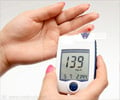About
Metabolism refers to the process of conversion of food into energy. Metabolism is the source of energy for maintaining our day- to- day activities and basic physiological body functioning.
There are two types of Metabolism:
- Catabolic metabolism refers to the breaking of large molecules into smaller ones’ so that they can be easily absorbed.
- Anabolic metabolism refers to the assembly of small molecules into larger ones.
As and when food reaches our stomach, it begins to digest food. The body churns the food using enzymes released by the pancreatic and duodenal gland to break it down to simple sugars,
Our brain consumes glucose for its normal thinking process. The muscles of our heart and eyes and for that matter muscles utilized in keeping you sit stable on the chair utilize glucose.
Protein in the muscular cells is broken down and re -synthesized to produce energy.
Cells pump sodium ions into and potassium ions out of the cell. This is called the electrical activity of the cells. This activity requires the use of energy. So there need to be a constant source of energy to allow these activities from the cellular to organ level being carried upon smoothly. The micronutrients like carbohydrate, fat, protein extracted from our dietary intake are further broken down into energy in the form of ATP (adenosine tri phosphate) which is further utilized to produce energy.









